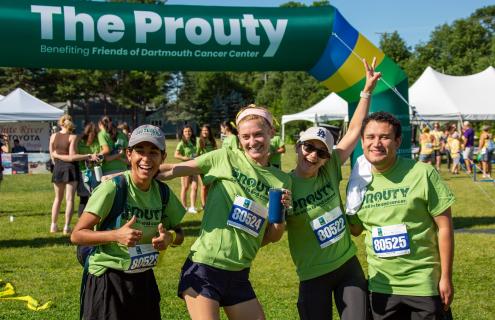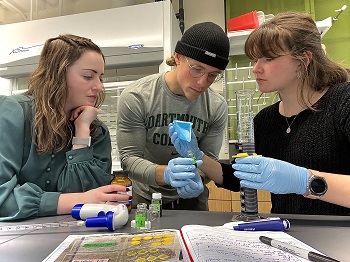
Identifying the right combination of immunotherapies and understanding how this combination works to eliminate cancer will lead to better patient response rates and prolonged survival.
Yina H. Huang, PhDThe 41st Prouty was a record-smashing year for fundraising. Money raised from all Friends events goes to “life-changing research.” But what does that mean? Meet the researchers who are underway with exciting new studies.
Why FLASH works
FLASH radiotherapy delivers ultra-high doses of radiation in a fraction of a second. The result is good tumor control with fewer side effects and damage to healthy surrounding tissue compared to conventional radiation therapy. However, exactly how and why this delivery method works so well is still unknown. Building on past laboratory studies, researchers Valentin Demidov, PhD, Rongxiao Zhang, PhD, P. Jack Hoopes, DVM, PhD, and Brian W. Pogue, PhD, will look deep into the vessel networks that deliver blood to skin tissues, called microvasculature. Engineering highly specialized light technology, the group will measure microvascular response in real tumors after FLASH therapy. “This knowledge will set the stage for long-term studies of FLASH effects on skin tissue,” says Demidov.
Testing homes for radon
Radon, a colorless, odorless gas found in many homes in our region is the second leading cause of lung cancer deaths, killing about 150 NH and VT residents a year. Risk is increased for people who smoke. Yet most homes go untested for radon. Population science researchers Rian M. Hasson, MD, and Judy R. Rees, MD, PhD, are using their Prouty grant to change that. “We’ll engage community partners to learn why homes are not being tested for radon and co-develop a risk-tailored, technology-supported intervention designed to increase testing,” says Hasson. The team will then pilot the intervention to evaluate how well it works, and use community feedback to prepare for a larger trial.

Support for bone healing
The spread of cancer into bone affects more than half of patients with common cancers and relates to skeletal events such as fracture in up to 400,000 people in the US per year. Katherine R. Hixon, PhD, and her team are creating cryogel “scaffolds” made from biomaterials such as silk fiber protein and gelatin. These scaffolds will be tested in the presence of different doses of radiation therapy, including FLASH radiation, to see whether bones have the potential to regenerate or heal after exposure to radiation. “This work meets a pressing need for improved treatment outcomes in patients with metastatic bone disease,” says Hixon.
Immunotherapies better together
Immunotherapies use the patient’s own immune system to attack cancer cells. “Immune checkpoint blockade” prevents the immune system from “switching off” our response to cancer. “Adoptive cell therapies” such as CAR-T cell therapy supercharge a patient’s own immune cells to attack cancer. CAR-T cell therapy is very effective in liquid tumors but doesn’t work in solid tumors. Yina H. Huang, PhD, and Aaron McKenna, PhD, are looking to change that by combining both forms of immunotherapy and observing how one affects the other in the short and long term. “Identifying the right combination of immunotherapies and understanding how this combination works to eliminate cancer will lead to better patient response rates and prolonged survival,” says Huang.
Better staging with technology
The cancer staging system helps oncologists determine how advanced a patient’s cancer is, and what disease management options may be available. However, challenges remain in adequately assessing tumor stage. A research team led by Joshua J. Levy, PhD, is developing and integrating new AI informatics software with imaging technologies that would provide more accurate, and lower-cost solutions to staging challenges. “The sophisticated data this system would generate will greatly improve the understanding of cancer spread and shed new light on optimal therapeutics,” says Levy. This project will also provide career opportunities for regional high school students through an institutionally supported internship program. “These students will learn how to use innovative AI technologies and advance translational biomedical research through participation in mentoring, tutorials and workshops,” says Levy.
The 42nd annual Prouty will take place on July 14-15, 2023. To learn how you can make more pilot projects like this possible, please visit TheProuty.org.